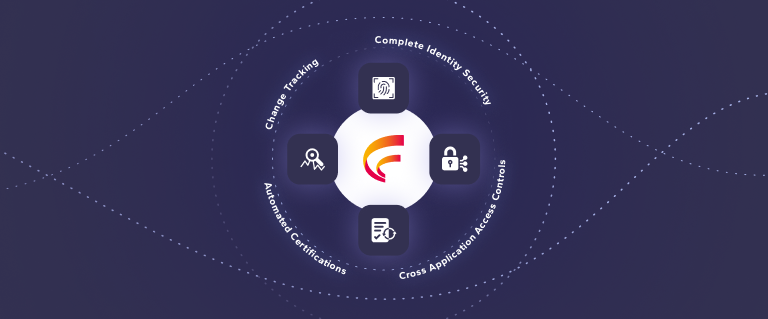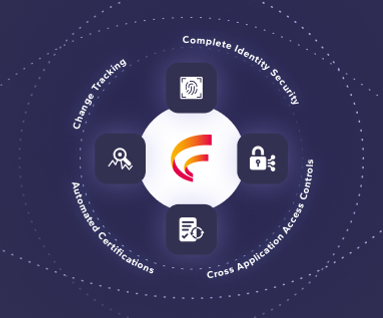SOX Compliance: Navigating Section 404 with Confidence
By Fastpath
11/15/2024
5min read

In a fast-paced regulatory environment, businesses face immense pressure to maintain transparency, accountability, and control over their financial reporting. One of the key regulations is the Sarbanes-Oxley Act (SOX), passed in 2002 in response to major financial scandals like Enron and WorldCom.
While SOX covers several areas of corporate governance, Section 404 stands out as one of the most critical, requiring companies to implement and maintain robust internal controls over financial reporting (ICFR). In this article, we explore the key aspects of SOX compliance, the importance of Section 404, and how businesses can streamline the process with the right IT general controls.
What is SOX Compliance?
The Sarbanes-Oxley Act was enacted to restore public trust in the financial statements of publicly traded companies. It introduced strict reforms to improve the accuracy of corporate disclosures and prevent fraud. SOX compliance refers to meeting the standards outlined in the Act, particularly ensuring that internal financial reporting controls are effective and consistently monitored.
But it’s important to clarify a common misconception: SOX compliance isn’t something you achieve through certification. Instead, companies undergo audits by external auditors who assess the effectiveness of these controls and issue a report. This report is then used by stakeholders to determine the health of a company’s control environment.
The Focus: Section 404: Internal Controls over Financial Reporting (ICFR)
Section 404 is arguably the most significant and demanding of all the provisions under SOX. It requires that companies establish and regularly test and verify their internal controls over financial reporting. The goal? To ensure that financial statements are accurate and free from material misstatements.
What does Section 404 require?
- Management Responsibility: Management must assess and report on the effectiveness of internal controls. This includes creating an annual internal control report that identifies weaknesses and certifies the overall reliability of the controls in place.
- External Auditor Opinion: In addition to management’s assessment, external auditors must issue an independent opinion on the company’s internal controls.
- IT General Controls: Section 404 places significant emphasis on IT systems, as much of the financial reporting process is automated. Companies must implement IT general controls (ITGCs) to safeguard data integrity, security, and access, all of which play a crucial role in preventing errors or fraud.
Preparing for a SOX Audit
Navigating the SOX audit process can be daunting, especially given the breadth of Section 404’s requirements. However, with a structured approach, companies can ease the burden and ensure a smoother experience. The process begins with planning and scoping the audit. This involves identifying all the processes and systems involved in financial reporting, conducting risk assessments, and determining which controls are key to achieving compliance.
Risk Assessment and Fraud Analysis
A cornerstone of SOX audits is risk assessment. Management must evaluate potential risks to financial reporting and prioritize those that could lead to material misstatements. Fraud risk, in particular, is a critical focus, as it directly undermines the accuracy of financial reports. Identifying vulnerabilities and ensuring that controls are in place to mitigate these risks is essential.
Choosing a Framework
Many companies opt to use a recognized framework like COSO (Committee of Sponsoring Organizations) when preparing for a SOX audit. COSO provides a structured approach to evaluating the effectiveness of internal controls, including guidance on assessing IT risks, control activities, and monitoring.
The Role of IT in SOX Compliance
IT systems underpin nearly every aspect of financial reporting. As such, ensuring robust IT general controls is essential for SOX compliance. These controls are designed to protect the systems that store and process financial data.
The key ITGCs include:
- Access Controls: Ensuring that only authorized personnel have access to sensitive financial data.
- Data Backup: Implementing regular data backup protocols to prevent loss or corruption of financial records.
- Change Management: Having processes in place to track changes to financial systems and ensure that all updates are authorized and verified before implementation.
Automating IT Controls with Fastpath
While the manual testing and monitoring of controls can be time-consuming and prone to human error, companies like Fastpath offer solutions that help automate IT general controls. Fastpath provides tools for real-time monitoring, access mitigation, and continuous control auditing, allowing companies to streamline their SOX 404 processes.
By leveraging automation, businesses can:
- Reduce the risk of manual errors in the control testing process.
- Enhance the timeliness and accuracy of their financial reports.
- Ensure compliance with SOX requirements, particularly in the area of access controls and segregation of duties (SoD).
Best Practices for SOX Compliance
Achieving and maintaining SOX compliance doesn’t have to be a monumental task. By following a few best practices, companies can strengthen their internal control framework and reduce the likelihood of issues during audits.
- Adopt a Top-Down Risk Assessment Approach: Focus on the areas that pose the greatest risk to financial reporting, such as significant accounts and processes.
- Automate Where Possible: Automation tools, like those provided by Fastpath, can help reduce the complexity and manual effort associated with testing controls.
- Regularly Monitor and Update Controls: SOX compliance is not a one-time task. Continuous monitoring of controls ensures that they remain effective over time, especially as systems and processes evolve.
- Engage Internal Auditors Early: Internal auditors can provide valuable insights into the state of your controls before the external audit, helping you address any weaknesses proactively.
The Challenges and Benefits of SOX Compliance
While SOX compliance can be resource-intensive, the benefits far outweigh the challenges. Implementing strong internal controls can:
- Detect and prevent fraud: A robust control environment makes it much harder for fraud to occur.
- Improve transparency: Investors and stakeholders gain confidence in the reliability of the company’s financial statements.
- Enhance corporate governance: Good controls foster accountability at all levels of the organization.
At the same time, companies may face common challenges, such as the rising costs of compliance, particularly for smaller organizations, and the difficulty of managing manual processes. Automating controls can alleviate many of these pain points, making compliance more manageable and cost-effective.
SOX Equivalents Around the World
Though SOX is a U.S. regulation, similar standards exist in other countries. For example, Japan has J-SOX, and the UK has similar regulations to promote transparency and accountability in financial reporting. Multinational companies must often navigate these global standards, making a unified approach to internal controls even more essential.
Finally...
SOX compliance, especially under Section 404, is a critical aspect of corporate governance that ensures the accuracy and reliability of financial reporting. By focusing on internal controls, particularly IT general controls, and leveraging automation tools like Fastpath, companies can not only meet regulatory requirements but also enhance their overall control environment.
Fastpath plays a pivotal role in simplifying the SOX compliance journey, providing businesses with the tools they need to succeed in an increasingly complex regulatory landscape.











 (515) 276-1779
(515) 276-1779  (515) 864-0318
(515) 864-0318  info@gofastpath.com
info@gofastpath.com